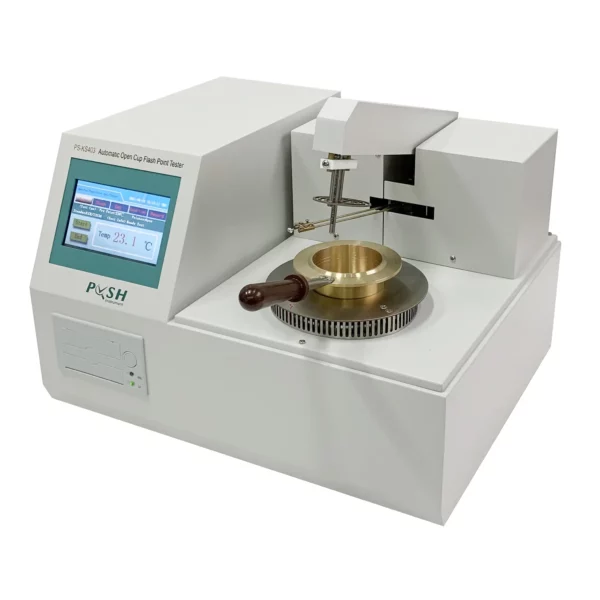A flash fire point tester plays a crucial role in driving success in application testing, particularly in industries where flammable liquids or volatile substances are used. Here are the key ways in which a flash fire point tester contributes to achieving success in application testing:
Safety Assurance:
The primary function of a flash fire point tester is to determine the flash point and fire point of a substance. The flash point is the lowest temperature at which the vapor of a substance can ignite in the presence of an ignition source, while the fire point is the temperature at which sustained combustion occurs. By accurately measuring these points, the tester helps assess the potential fire and explosion hazards associated with the substance. This information is crucial for ensuring the safety of personnel, equipment, and the overall application.
Compliance with Regulations:
Many industries have specific regulations and safety standards that govern the handling, storage, and transportation of flammable substances. A flash fire point tester enables organizations to comply with these regulations by providing precise measurements of flash and fire points. By demonstrating compliance, organizations can meet legal requirements, prevent accidents, and avoid penalties, leading to successful application testing and operation.
Material Selection and Compatibility:
In application testing, it is vital to select materials that are compatible with the substances involved. A flash fire point tester helps in evaluating the compatibility of materials by determining their resistance to ignition and combustion. By testing various materials, such as insulation, seals, or protective coatings, organizations can ensure that they are using suitable materials that can withstand the expected fire and temperature risks, thus driving the success of the application.
Quality Control in Manufacturing:
Flash fire point testing plays a crucial role in quality control during the manufacturing process of flammable substances or products. By testing samples from production batches, manufacturers can ensure that the materials meet the required safety standards and specifications. This quality control process ensures that only safe and reliable substances or products are released into the market, contributing to the success of the application and building customer trust.

Risk Assessment and Mitigation:
Flash fire point testing supports comprehensive risk assessment and mitigation strategies. By understanding the flash and fire points of substances used in an application, organizations can identify potential risks and implement appropriate safety measures. This includes establishing proper storage procedures, ventilation systems, fire suppression systems, and personal protective equipment. By effectively mitigating risks, organizations can drive the success of application testing and operation by ensuring a safe working environment.
Research and Development:
Flash fire point testing also plays a role in research and development activities. It helps in evaluating the safety and performance of new substances, formulations, or products. By testing different formulations at various stages of development, researchers can optimize the composition to achieve desired properties while minimizing the fire and explosion risks. This iterative testing process ensures that new substances or products are safe, reliable, and successful in their intended applications.